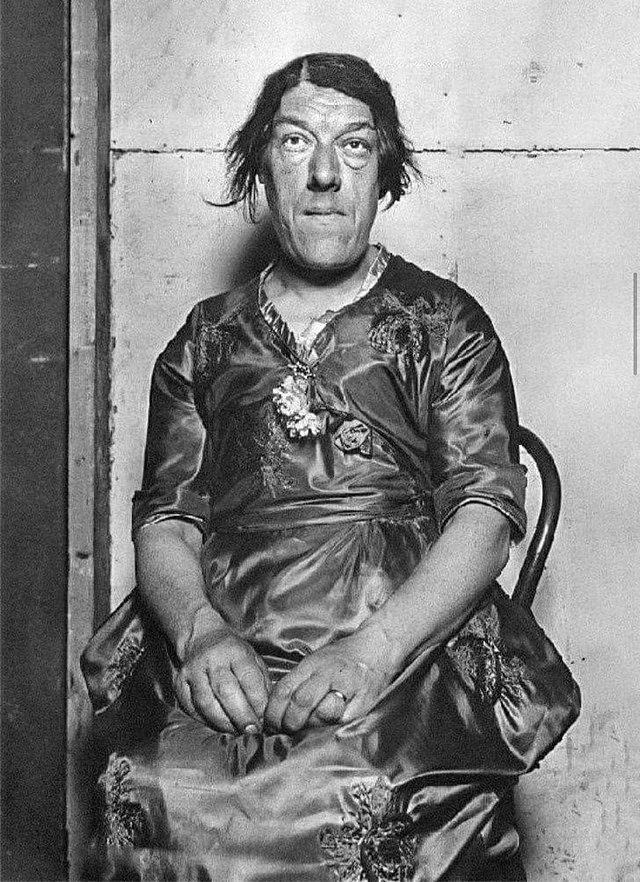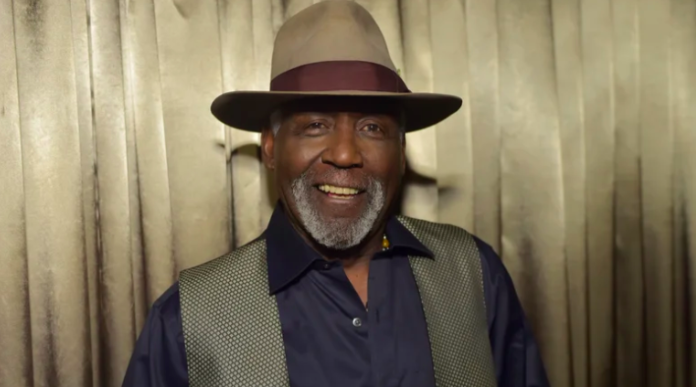Beautiful English woman Mary Ann Bevan was forced to work in sideshows and circuses in the early 20th century after being diagnosed with acromegaly.
Known as the “Ugliest Woman in the World,” Mary Ann Bevan frequently worked as a performer at carnivals and other events in order to support her family and make ends meet.
It wasn’t always thought of Mary Ann Bevan as being “ugly.”

She was treated and appeared like any other young woman when she was born in the late 19th century in a London suburb.
Everything changed when she was diagnosed with an uncommon disfiguring illness after she had reached maturity and had several children.
Bevan’s face, hands, and feet were irreversibly malformed in a few of years, giving her no alternative but to depend on her appearance for financial support.
One of the most tragic characters from the once-thriving sideshow industry, Mary Ann Bevan, relates how she came to be known as the Ugliest Woman in the World.
Mary Ann Bevan’s Formative Years
On December 20, 1874, Mary Ann Webster was born into a large family on the outskirts of London.
She was raised identically to her siblings, completed her nursing education in 1894, and wed Kentish farmer Thomas Bevan in 1903.

The Bevans had two healthy sons and two healthy daughters, which was a great start to their married life.
With just a meagre salary, Mary had to raise their four small children after Thomas passed away suddenly in 1914.
Following her spouse’s passing, she started displaying signs of acromegaly, a disorder where the pituitary gland produces too much growth hormone.
Acromegaly is rare, however it is currently treatable if detected early enough.
Bevan’s appearance started to drastically change, but due to early 20th-century medical limitations, nothing could be done about it.
Acromegaly can lead to a number of significant concerns, including heart disease, kidney issues, and sleep apnea.
Bevan’s illness caused her nose to dramatically grow, her forehead and lower jaw to protrude, and her typically small hands and feet to balloon out of proportion.
She had to take on a variety of odd occupations to support her family as her appearance changed and she found it difficult to land steady employment.
The uncommon disease irreversibly altered her appearance.

A former fairground worker named Bevan alleged that a farmer she had worked for years prior had informed her that “all [she] was fit for [was] the ugly woman competition.”
Bevan took the farmer’s advice to heart, and shortly thereafter joined and won the “Homeliest Woman” contest, beating out 250 other contestants.
Since her doctor had warned her that her condition would only worsen, she decided to take advantage of the situation for the benefit of her children after her success attracted the attention of sideshow proprietors.
Quickly, she found steady employment performing at fairs across the British Isles.
In 1920, Bevan answered an advertisement in a London newspaper reading “Wanted: Ugliest woman. Nothing repulsive, maimed or disfigured. Good pay guaranteed, and long engagement for successful applicant. Send recent photograph.”
The ad had been placed by a British agent for Barnum and Bailey’s circus, who found that she had “what may sound like a paradox, the face of an ugly woman that was not unpleasant.”
When Bevan sold postcards like these at fairs, she made about $12 per card.
Bevan was invited to join the sideshow at Coney Island’s Dreamland amusement park, which at the time was one of the most popular destinations for sideshow artists, after sending the agency a photo he had taken specifically for the occasion.
The idea for the show came from Senator William H. Reynolds and sideshow operator Samuel W. Gumpertz, who went on to collaborate with Harry Houdini.
Along with the likes of Lionel the Lion-Faced Man, Zip the “Pinhead,” and Jean Carroll the Tattooed Lady, she was a featured attraction in many carnivals and sideshows.
Visitors to Dreamland were free to stare at her 154-pound physique, 5-foot-7 height, size 11 feet, and size 25 hands.
Bevan took the degrading treatment in stride. “Smiling mechanically, she offered picture postcards of herself for sale,” thus securing sufficient money for herself and for her children’.
Mary Ann Bevan’s popularity only grew with the passage of time; by the 1930s, she was a featured act in the world-famous Ringling Bros. and Barnum & Bailey circus.
In just two years of performing in New York, she made £20,000, which is roughly comparable to $1.6 million in 2022. This allowed her to achieve her aim of providing for her children.
Mary Ann Bevan’s Final Days
Until her death in 1933, Bevan was a staple at the Dreamland sideshow in Coney Island.
Bevan made friends among the sideshow scene and outside of it, and he even found time for love. She fell in love with Andrew, the giraffe keeper, while playing at Madison Square Garden in 1929.
She even agreed to get pampered at a New York City salon, where she received a manicure and massage in addition to having her hair straightened and her face painted.
Some people cruelly maintained that “the rouge and powder and the rest were as out of place on Mary Ann’s countenance as lace curtains on the portholes of a dreadnought.” Mary Ann herself, however, upon seeing her reflection, simply said, “I guess I’ll be getting back to work.”
Bevan spent the rest of her life working on Coney Island until her death on December 26, 1933.
She was 59 years old. Her body was flown back to England for the burial, and she was laid to rest in Brockley and Ladywell Cemetery in the city’s Southeast.
Mary Ann Bevan was mostly forgotten by the general public until her likeness was utilized mockingly on a Hallmark card in the early 2000s.
After objections were raised over subjecting her to further humiliation, the card was discontinued.


